Stepping into a redwood forest is like entering a living cathedral—sunbeams pierce the canopy, mist weaves through ancient trunks, and silence amplifies the grandeur of trees that have stood for over a thousand years. When I first set out to practice redwood forest photography, I quickly realized how different it is from other types of landscape photography. The towering trees, shifting light, and dense atmosphere make it both exciting and tricky.
In this guide, I’ll share 10 essential tips I’ve learned for capturing the redwoods—whether you’re visiting Northern California, including how to work with light, compose strong images, and choose the best lenses and gear.
By Guest Contributor Ken Hubbard
What You’ll Learn in This Article:
- Convey the scale of redwoods using wide-angle lenses and perspective.
- Work with natural fog and forest light to capture mood.
- Use a tripod and long exposures for sharp, atmospheric shots.
- Compose images with leading lines and foreground interest.
- Find the best redwood photography locations in California.
Introduction: Why Redwood Forest Photography is Unique
Photographing redwoods isn’t like photographing mountains, deserts, or beaches. The forest demands slower shooting, a thoughtful approach, and the right gear. With the tallest trees on earth, shifting light conditions, and dense vegetation, you’ll need to adapt your techniques for the best results.
TIP 1: Embrace the Scale — How to Photograph the Giants
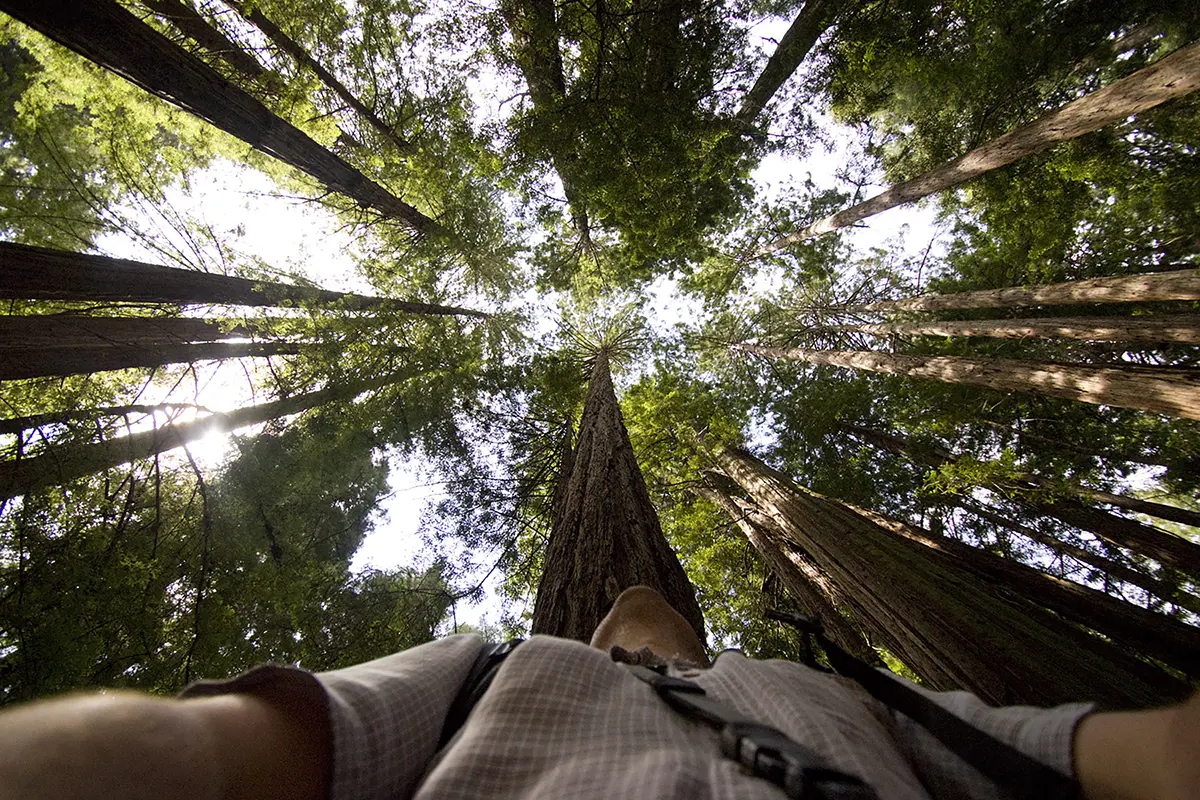
Redwoods are the tallest trees on earth, often over 300 feet. To show their massive scale, include a person, animal, or backpack for perspective. Wide-angle lenses, like Tamron’s 16-30mm, 17-28mm, 20-40mm, or 11-18mm exaggerate the height and make the trunks feel even more imposing. Shooting from the base of a tree and aiming upward is one of the best techniques for photographing redwood trees.
TIP 2: Work with the Light and Fog for Redwood Photos
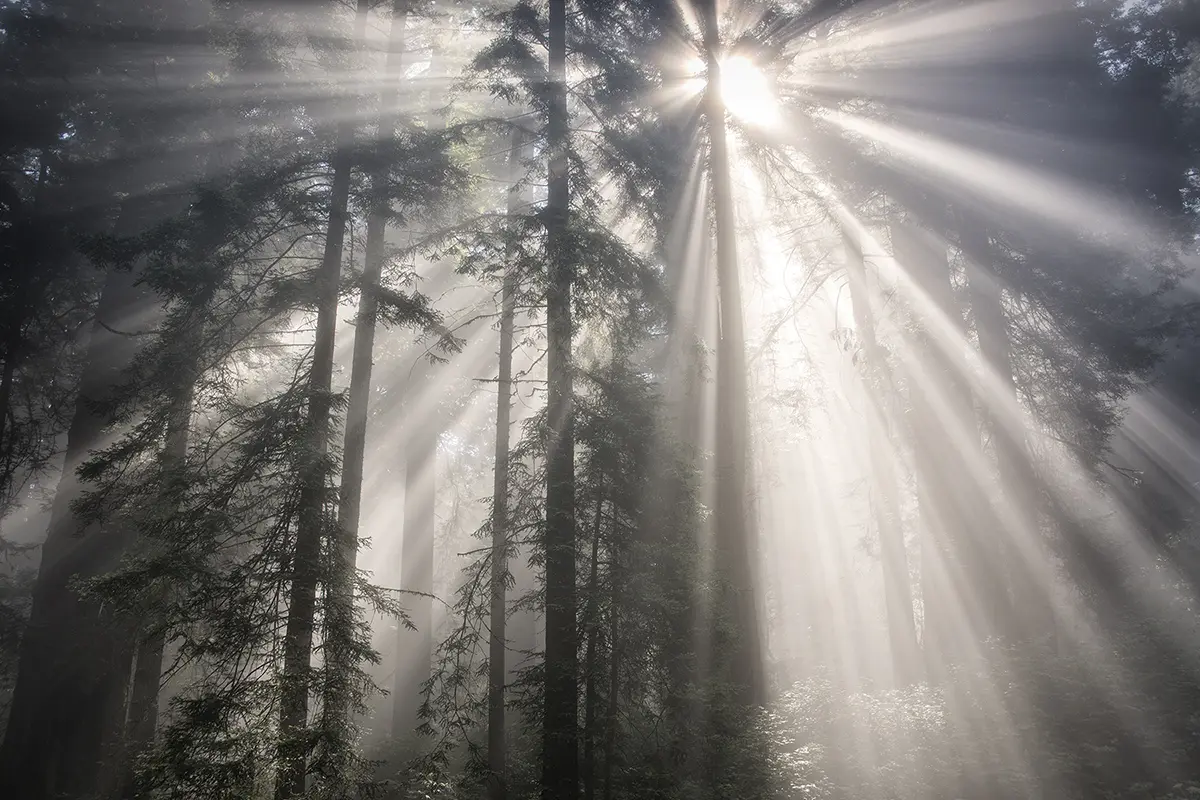
The most rewarding redwood forest photos often come in soft, diffused light. Early mornings or days after rain are ideal for foggy, moody conditions. Midday sun is harsh, so I stick to overcast days or golden hour. Fog and filtered light through the canopy add depth and atmosphere that makes redwood photography in California unique.
TIP 3: Use a Tripod for Sharp Redwood Forest Images
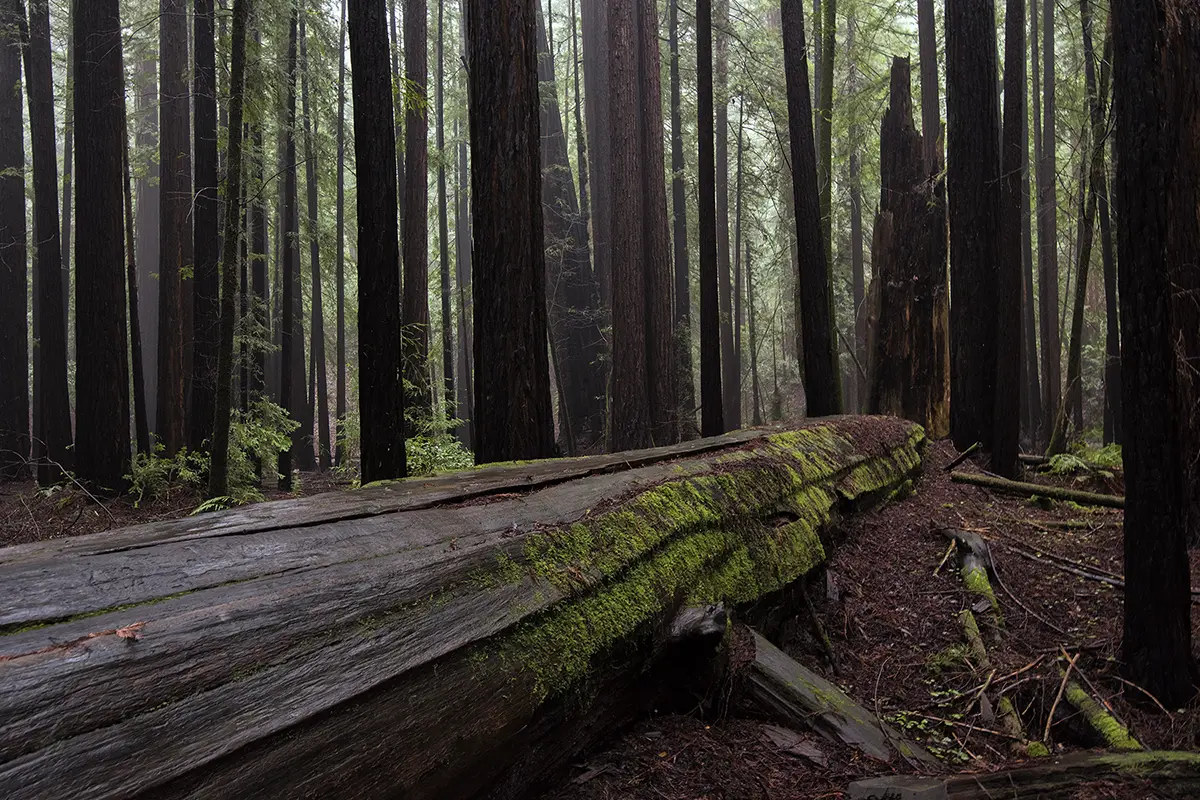
Because the canopy blocks much of the sun, redwoods are darker than you might expect. A tripod is critical for sharp shots at slow shutter speeds, especially below 1/30 sec. I also use it for long exposures that capture mist or moving ferns. For me, a tripod is a non-negotiable piece of photography gear for redwoods.
TIP 4: Capture Details and Intimate Landscapes in Redwoods
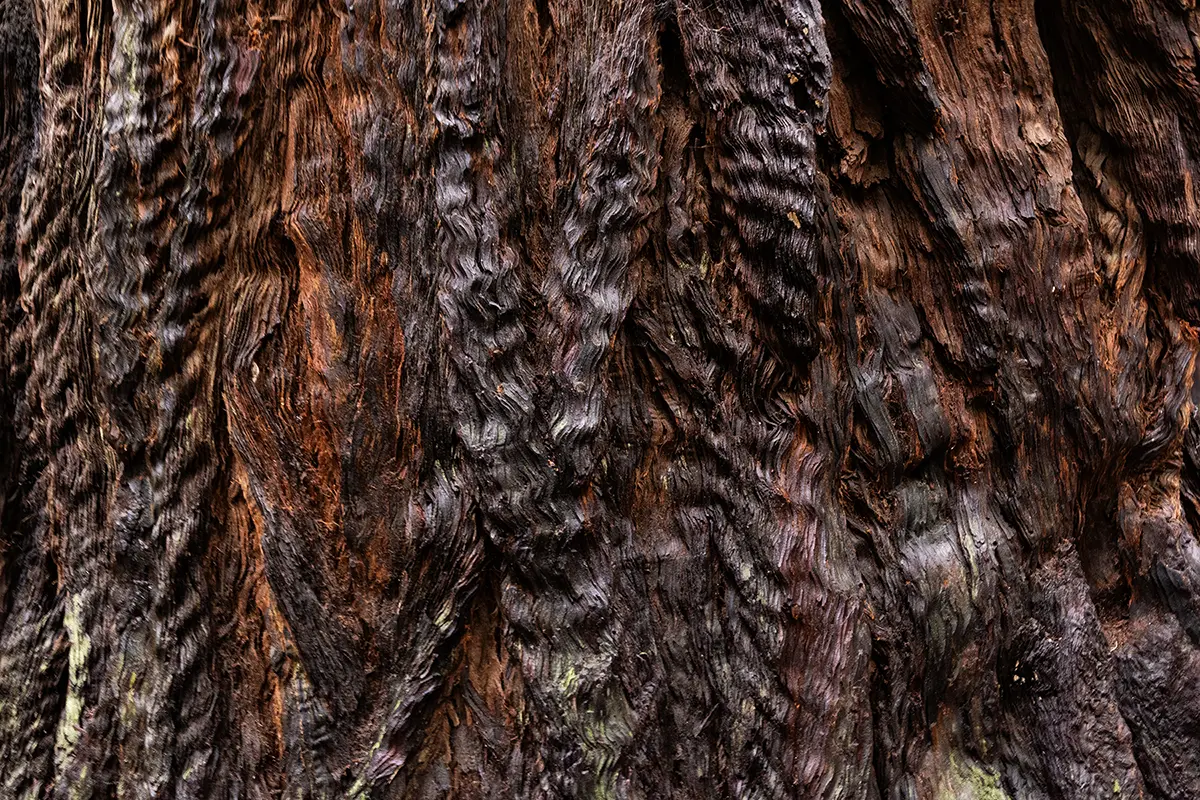
It’s easy to get caught up in the scale, but the forest floor is full of smaller stories. Dew on a fern, patterns in bark, or mushrooms growing on logs make for strong redwood detail shots. A macro lens or telephoto zoom helps isolate these scenes and adds variety to a redwood photo collection.
TIP 5: Composition Tips for Redwood Forest Photography
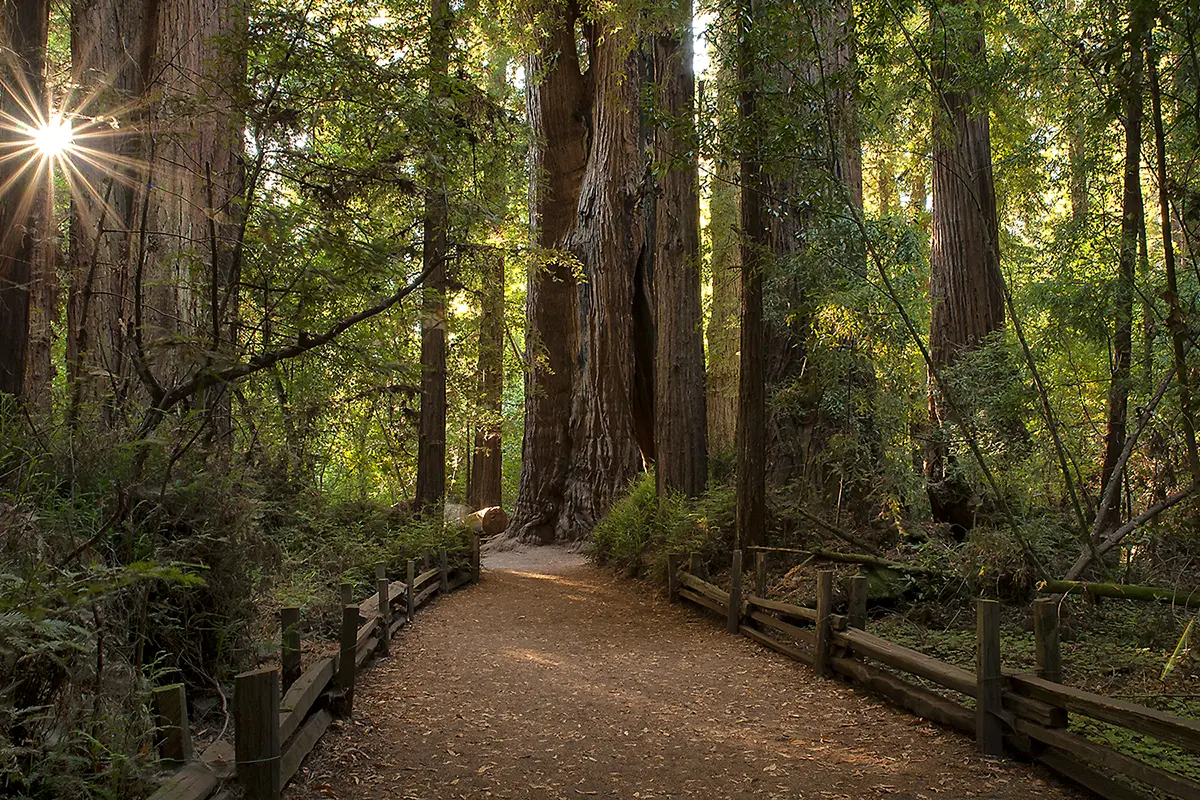
Redwood forests can feel chaotic, so I use composition tricks like leading lines (paths, streams, fallen logs) to guide the viewer. The rule of thirds and symmetry help create order. Shooting low with ferns or roots in the foreground gives depth to California redwood forest photography.
TIP 6: Capture the Canopy—Look Up
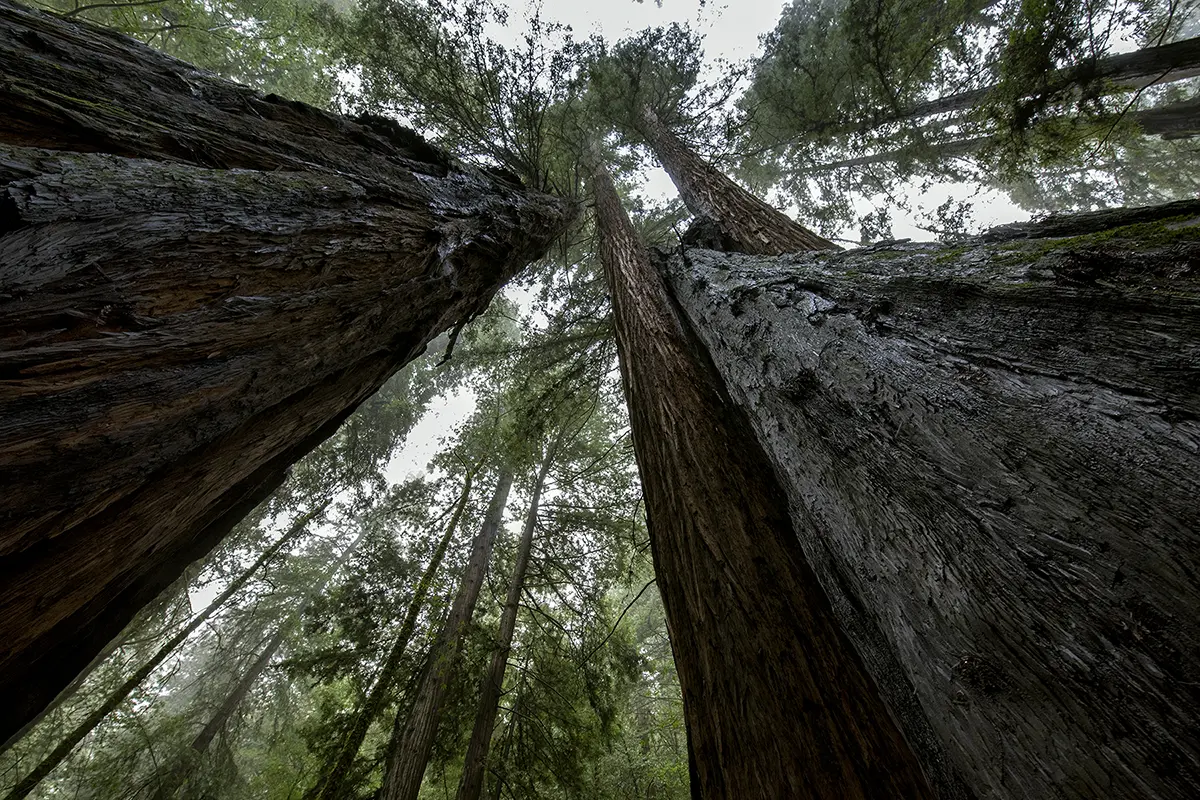
One of the most iconic shots in redwood forest photography is looking straight up at converging trunks. I’ll often lie on the ground with a wide-angle lens and small aperture (f/8 to f/16) to keep the whole canopy sharp. This perspective emphasizes both scale and geometry, creating dramatic compositions.
TIP 7: Weather and Mood in Redwood Photography
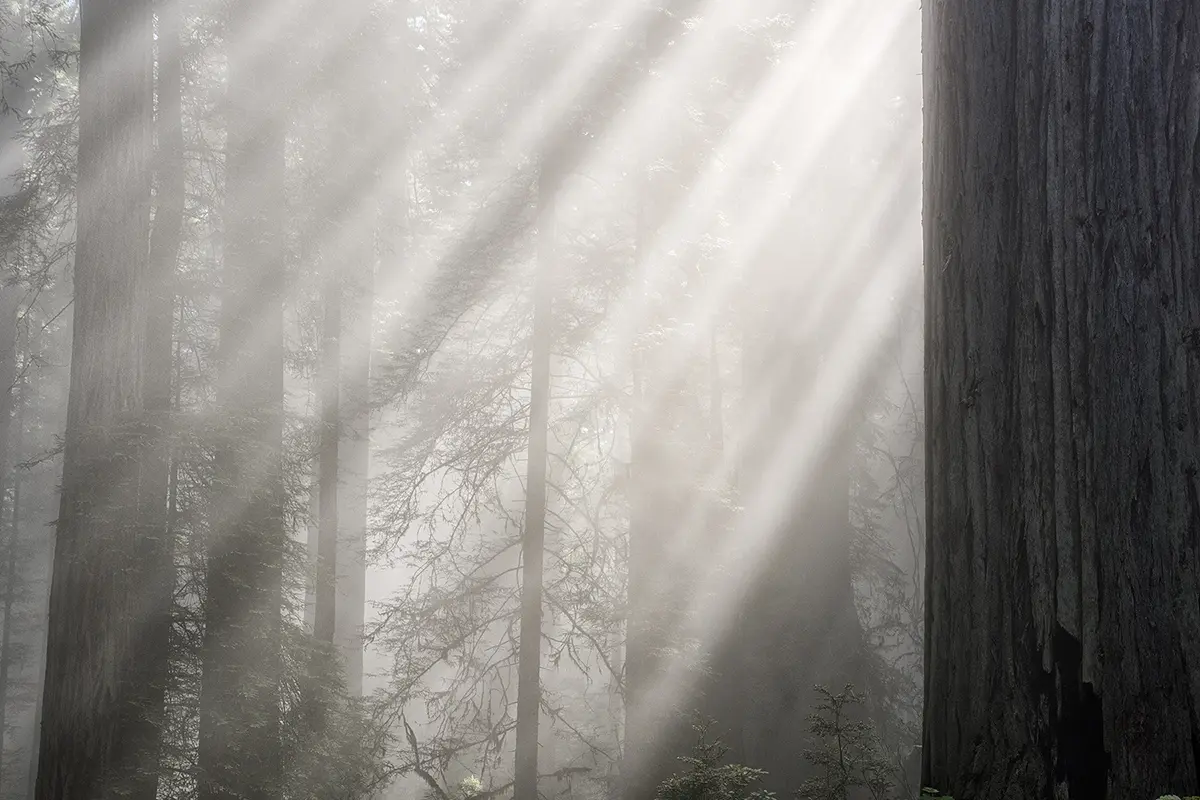
Some of my favorite redwood photographs come from rainy or foggy days. Mist adds depth, softens background trees, and creates atmosphere that sunny days lack. I keep rain covers or a simple plastic bag handy to protect my gear. Shooting in these conditions gives photos that timeless, mysterious quality unique to Northern California redwoods.
TIP 8: Colors of the Redwood Forest — Keep It Natural
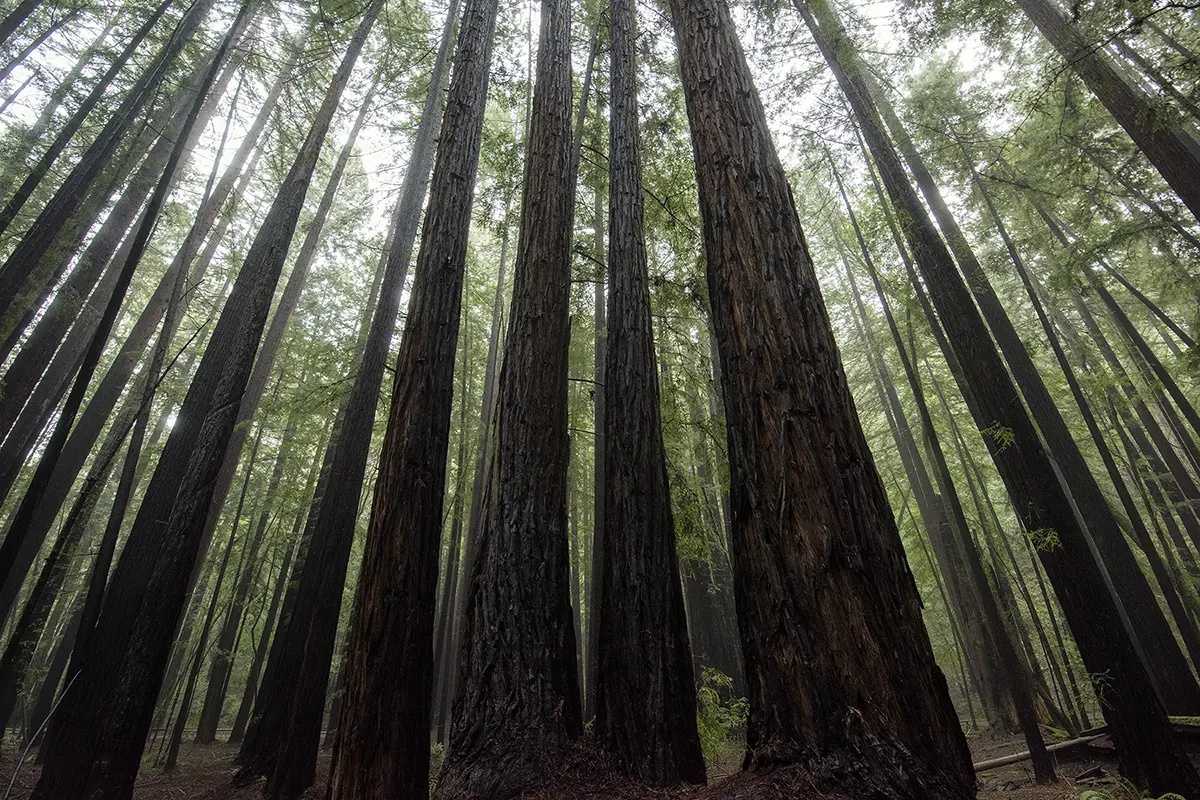
Redwood forests are more about muted tones than bold colors. Deep greens, warm browns, and occasional pops from wildflowers or fungi tell the story. Shooting in RAW gives me more control in post-processing. I avoid oversaturating so the authentic colors of redwood forests remain intact.
TIP 9: Include the Understory for Depth in Redwood Photos
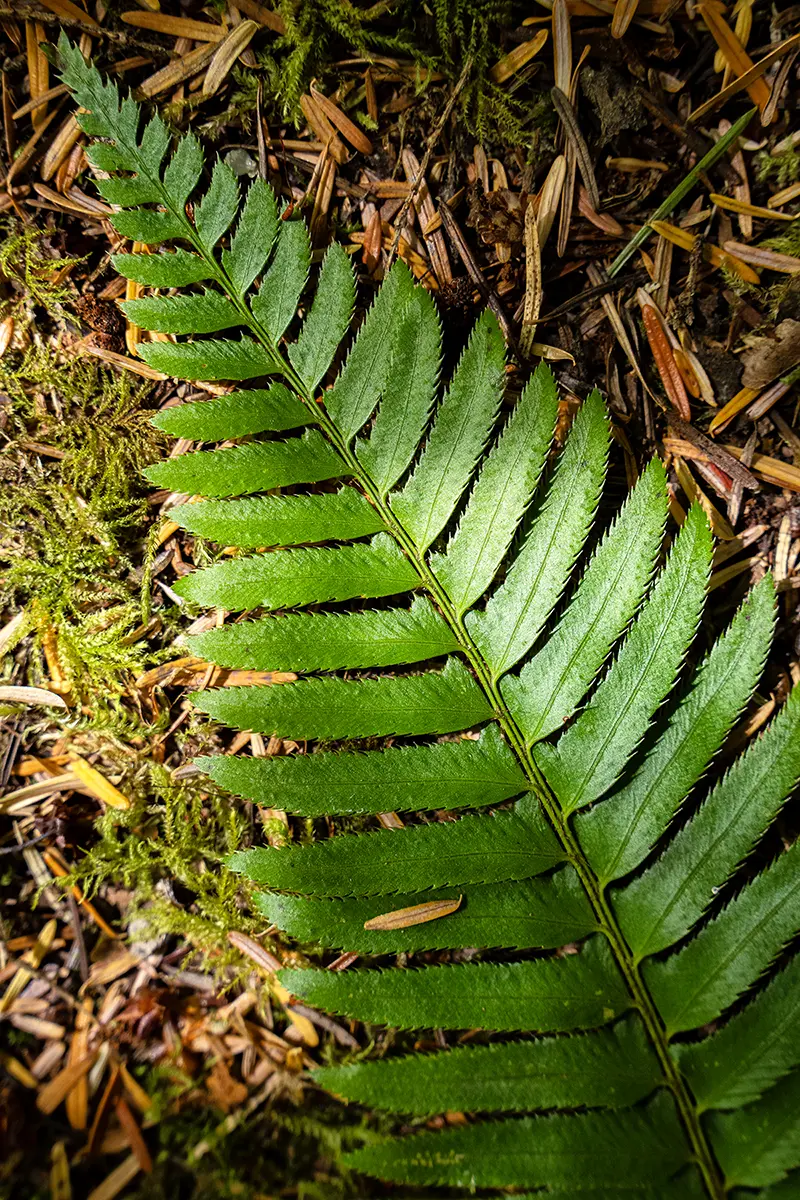
The forest floor is alive with ferns, sorrel, and fallen logs. Including these elements in the frame gives context to the towering trees above. Low-angle shots with the understory in the foreground add depth to redwood forest images and show the ecosystem that thrives under the canopy.
TIP 10. Ethical Redwood Photography — Leave No Trace
The redwoods are fragile and irreplaceable. I always stay on marked trails, avoid disturbing vegetation, and carry everything out. Practicing ethical nature photography ensures these forests will stay intact for future generations of photographers.
Best Gear for Redwood Forest Photography
- Camera: A body with strong low-light performance.
- Lenses: Wide-angle zoom (16-30mm, 11-20mm), standard zoom (28-75mm), macro (90mm), or versatile all-in-one (18-300mm, 28-200mm).
- Tripod: Lightweight but sturdy.
- Filters: Circular polarizer to cut glare and boost greens, ND filter for long exposures.
- Rain Cover: Essential for mist and wet weather.
These are the some of the best photography gear for redwood forest photography that make the biggest difference.
Tamron’s Best Lenses for Redwood Photography
- 16-30mm F2.8 G2: Perfect for capturing the towering scale of redwoods and dramatic wide-angle canopy shots.
- 11-20mm F2.8: Ultra-wide coverage for APS-C cameras for immersive forest scenes and tight spaces along redwood trails.
- 28-75mm F2.8 G2: A versatile zoom for everything from wide forest landscapes to detailed tree
- 90mm F2.8 1:1 Macro: Ideal for close-up shots of ferns, moss, and the intricate details of the forest floor.
- 18-300mm All-in-One: A travel-friendly option for APS-C cameras covering wide to telephoto, great for hikers wanting one lens solution.
- 28-200mm F2.8-5.6 All-in-One: Excellent walkaround lens that balances aperture, reach, and flexibility for both landscapes and intimate forest scenes.
Top Redwood Photography Locations in California
- Redwood National and State Parks: tallest trees on earth.
- Muir Woods National Monument: closest to San Francisco.
- Humboldt Redwoods State Park: home of the Avenue of the Giants.
- Henry Cowell Redwoods State Park: near Santa Cruz, with accessible trails.
These are some of the most accessible and photogenic California redwood photography spots I’ve found.
Final Thoughts on Photographing Redwoods
For me, redwood forest photography is about more than photographing tall trees—it’s about slowing down and connecting with the environment. The right gear, light, and techniques will help you make stronger images, but patience and respect for the forest are just as important. With these tips, you’ll be ready to bring home both stunning photos and unforgettable experiences.
Learn more about Tamron lenses at an authorized Tamron dealer near you or visit the TAMRON Store.
